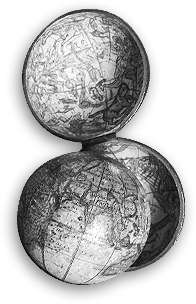Reviews
‘essential reading for those who determine where Nobel prizes should be scattered.’
P.W. Atkins, Times Higher Education Supplement
‘Perhaps the major attraction of the C60 story ... is that it required a leap of imagination and a generous helping of intuitive faith. This is what takes it beyond the mundane business of science as cautious, incremental steps, of Kuhn’s ‘normal’ science. ...
There is also the spice ... of watching top-rate scientists adrift in a foreign place. How does soot form? The musings of physical chemists Smalley and Harry Kroto were covered in opprobrium by the combustion community. How does one dissolved C60 from soot? Benzene is the screamingly obvious solvent, but not to the Heidelberg physicists. How do you make a closed sphere from hexagons? The impossibility of doing so is evident from the theorem due to Euler that is taught in high schools, but the discoverers of C60 spent frustrating days at the task. None of this is to the shame of the scientists concerned, but is simply an indication that great discoveries need not, and usually do not, require omniscience.
Aldersey-Williams is thorough as far as he goes, but he does not go everywhere. ... On the other hand, Aldersey-Williams takes us on some illuminating detours through the symmetry properties of polyhedra and the strange and recondite world of Buckminster Fuller the architect, many of whose meanderings he dismisses rightly, if irreverently, as exemplary pseudoscience. ... Aldersey-Williams maintains a distance from his topic that allows him to tread on more toes, no bad thing in a field laden with dispute and rivalry. ... very well written and rewarding.’
Philip Ball, Nature
‘the reader is held engrossed by the author’s lucid yet gripping style. The author succeeds in the ambitious aims mentioned above, and at the same time shows through the fullerenes story how science works. ... it is one of those rare books which hold the attention of the reader who is interested in science to the extent that he or she cannot put it down until it is finished. It is a fantastic book which occupies a high position in the literature of chemistry.’
Andreas Gügel, Angewandte Chemie
‘I was very much taken with this book and read it cover to cover as soon as I got it. ... Aldersey-Williams’s book is truly thought-provoking. ... the main merit of Aldersey-Williams’s book is that it conveys the spirit of the scientific discovery and places the fullerene saga in the broader context of our science and culture. Besides, fortunately, it does all this in a very readable way.’
István Hargittai, Chemical Intelligencer
‘reads like a detective novel. ... a powerful testimonial to the importance of curiosity-driven research in scientific discovery.’
American Scientist
‘Because this is well written, it should not be assumed that it is lightweight, or seeks merely to entertain. This is a fine piece of scholarship’
School Science Review
‘The author successfully conveys the excitement that accompanies a major scientific discovery, in a style that is reminiscent of Jim Watson’s 1968 classic, The Double Helix, and for this reason alone the book is worth reading.’
Chemistry and Biology

You can buy The Most Beautiful Molecule from
Amazon
in the UK, or from
Amazon
in the US, or support your local bookshop by ordering from them.

 You can buy The Most Beautiful Molecule from
You can buy The Most Beautiful Molecule from